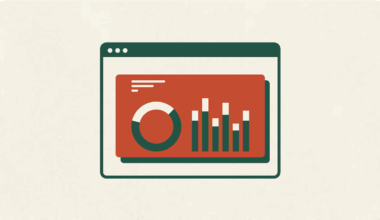Step-by-Step Guide to Integrating Payment Gateways via APIs
Integrating payment gateways using APIs is crucial for modern businesses aiming to enhance their transaction experiences. A payment gateway is a service that authorizes and processes transactions between customers and merchants. Many options are available, but they often require careful API integration to function correctly. This guide focuses on how to incorporate various payment gateways seamlessly. Before diving in, ensure you understand your needs, select the right gateway, and familiarize yourself with the API documentation provided by the payment service. Each payment gateway has its specific requirements for integration. Ensure to set up your development environment adequately, including libraries or SDKs provided by your chosen payment gateway. While steps may vary slightly from provider to provider, the basic structure remains consistent. Remember to secure user-sensitive information and comply with PCI DSS regulations to protect your customers and your business. Let’s explore a structured approach to help you successfully implement these payment gateway integrations, which will ultimately enhance your customer satisfaction and operational efficiency, as we delve deeper into the following sections. It is essential to follow best practices throughout the integration process to ensure smooth functioning.
Once you have selected a payment gateway, the next step is to acquire the necessary API credentials required for integration. This typically involves creating an account with your chosen payment service provider. You will need to log in to your account and navigate to the API settings section. Usually, payment services offer sandbox credentials for testing purposes without any real financial transactions. When generating these credentials, ensure to keep them safe, as they enable your application to authenticate its requests. Each payment service provider supplies specific API keys and tokens, essential for making calls to their platform. Familiarize yourself with the documentation provided by the service provider. It often contains examples of code snippets and endpoints to use, making it easier to implement the integration. Maintain good documentation of your credentials and ensure they are not hard-coded into your application. With all your credentials securely stored, you are now in a position to set up your environment for development. Utilize version control systems like Git to track your changes in code, ensuring a smooth workflow during development and testing phases.
Setting Up Your Development Environment
Setting up your development environment is a critical step in the integration process. Choose the appropriate programming language and framework compatible with the payment gateway’s API. Most payment gateways provide SDKs or libraries compatible with languages like JavaScript, Python, PHP, and Java. You should download and import these libraries to speed up the integration process. If the payment gateway you choose doesn’t have an SDK compatible with your programming language, you can still use their API by making HTTP requests directly. This generally involves using libraries like Axios or Fetch for JavaScript. Ensure to follow best practices for API integration, including error handling to account for various scenarios, like network issues or invalid requests. Start by making simple GET requests to initial endpoints provided in the documentation. Carefully analyze the responses to ensure correct integration. Once you have a working setup, you can move on to implementing the payment transaction functionalities that contribute to the checkout system of your application. Testing is vital at this stage, ensuring reliability and performance before moving your application to production.
Implementing payment transactions requires configuring your application to handle user inputs effectively. Begin by designing your checkout forms, ensuring they are user-friendly and secure for entering sensitive information. Validate user inputs thoroughly to prevent issues during transaction processing. For this, utilize both client-side and server-side validation techniques to capture any potential errors before reaching the payment gateway. Once the user input has been successfully validated, you can initiate the payment transaction by making POST requests to the payment gateway’s API. It’s paramount to ensure that the API requests include all necessary parameters like, payment amount, currency, and payment method details. Be mindful of security best practices, such as employing HTTPS to encrypt the data transmitted between your application and the payment gateway. Additionally, keep your users informed about their transaction status, providing prompts or notifications when payments are being processed. This builds trust and improves overall customer satisfaction. Your application should be designed to handle multiple payment options, allowing users to choose their preferred method seamlessly during the checkout process.
Testing Your Integration
Testing your integration is a vital phase before going live with your payment gateway. Using the sandbox credentials, simulate different payment scenarios to ensure everything functions as intended. It’s recommended to create test cases that represent various scenarios, including successful payments, failed transactions, and edge cases like network timeouts. During this testing phase, it’s crucial to monitor the responses received from the API for different transactions. Ensure your application correctly handles errors and provides informative feedback to users. Use logging mechanisms to help trace any issues encountered during the testing phase. When conducting these tests, remember to test both card payments as well as alternative methods, such as digital wallets or bank transfers if they are supported by the payment gateway. Once testing is complete, and you’ve addressed any issues, you can confidently prepare for deployment. Have a rollback plan in place to quickly revert to the previous version if unexpected issues arise after deployment. This will minimize user disruption and build confidence in your payment process.
Upon successful testing and troubleshooting any issues, you are ready to deploy your payment gateway integration in a live environment. Before going live, gather all necessary documentation about your integration, including architecture, API configuration, and non-functional requirements. It’s essential to inform your stakeholders and potentially affected staff about the deployment timeline, so everyone is aligned with the changes. Ensure that your monitoring tools are configured to keep an eye on transaction performance and errors following the deployment. Utilize performance benchmarks set during the testing phase to compare against live operation metrics. Remember, user experience is paramount; keep an eye out for any friction points users may encounter post-deployment. Having plans for potential rollback or hot fixes will allow you to respond to any issues more effectively without lengthy downtimes. Maintain communication channels open for customer inquiries or issues during the early stages of the live deployment. Regular feedback from users can provide valuable insights for further enhancements and optimizations of the payment experience.
Maintaining and Updating Your Integration
Maintaining and updating your payment gateway integration is crucial for long-term success. Payment technologies are continuously evolving, and as such, it is vital to stay updated with any changes or new features released by your service provider. Regularly check your payment gateway’s API documentation for updates. New methods, parameters, or security features might be available that could enhance your application’s performance and security. Schedule routine checks and updates of your application to ensure compatibility with the API versions. It’s also advisable to conduct performance analysis periodically to ensure optimum transaction processing speeds. Additionally, optimizing the user interface for the payment process can lead to improved customer satisfaction. Consider implementing A/B testing to assess enhancements’ effectiveness, focusing on conversion rates and user experience metrics. Engage with your payment gateway support for any inquiries or challenges; they often provide valuable insights and advice tailored to improving your integration. By adopting a proactive maintenance strategy, your application can continue to provide seamless payment experiences that adapt as technology and user expectations evolve.
The journey of integrating payment gateways via APIs may seem daunting, but careful planning can lead to successful implementation. Following these structured steps creates a robust framework for integrating digital payments into your applications while ensuring a focus on security and user experience. Understand the significance of validating user inputs, implementing testing phases, gathering feedback, and maintaining your integration. As you continue to grow and adapt to emerging trends in digital payments, being agile and ready for updates will ultimately be key to sustenance and success. With the right tools and processes in place, you can improve transaction processes, enhance user satisfaction, and ultimately contribute to your business growth and success. Emphasis on adhering to best practices in API usage cannot be overstated. This will not only safeguard customer information but also build trust and reliability in your payment processing systems. Using this guide, start your journey toward integrating effective payment solutions in your application. Enjoy the journey of building a seamless payment experience that prioritizes your customers and business alike, fostering greater customer loyalty and trust.


